Complete Solutions to Applications Of Newton'S Laws Of Motion of chapter NEWTONS LAWS OF MOTION of Class 11 book with complete answers and questions
| Class 11 | PHYSICS |
| Chapter | NEWTONS LAWS OF MOTION |
| A2Z | Applications Of Newton'S Laws Of Motion |
| Number Of Questions | 33 |
| Academic Year | 2023-24 |
Two persons are holding a rope of negligible weight tightly at its ends so that is horizontal. A 15kg weight is attached to the mid point which how no longer remains horizontal. The minimum tension required to completely straighten the rope is:
04:24View SolutionM is `a` fixed wedge. Masses `m_(1)` and `m_(2)` are connected by `a` light string. The wedge is smooth and the pulley is smooth and fixed `m_(1)=10kg` and `m_(1)=7.5kg` . When `m_(2)` is just released, the distance it will travel in 2 second is.
 06:03View Solution
06:03View SolutionWith what acceleration 'a' should the box of figure moving up so that the block of mass `M` exerts `a` force `7Mg//4` on the floor of the box?
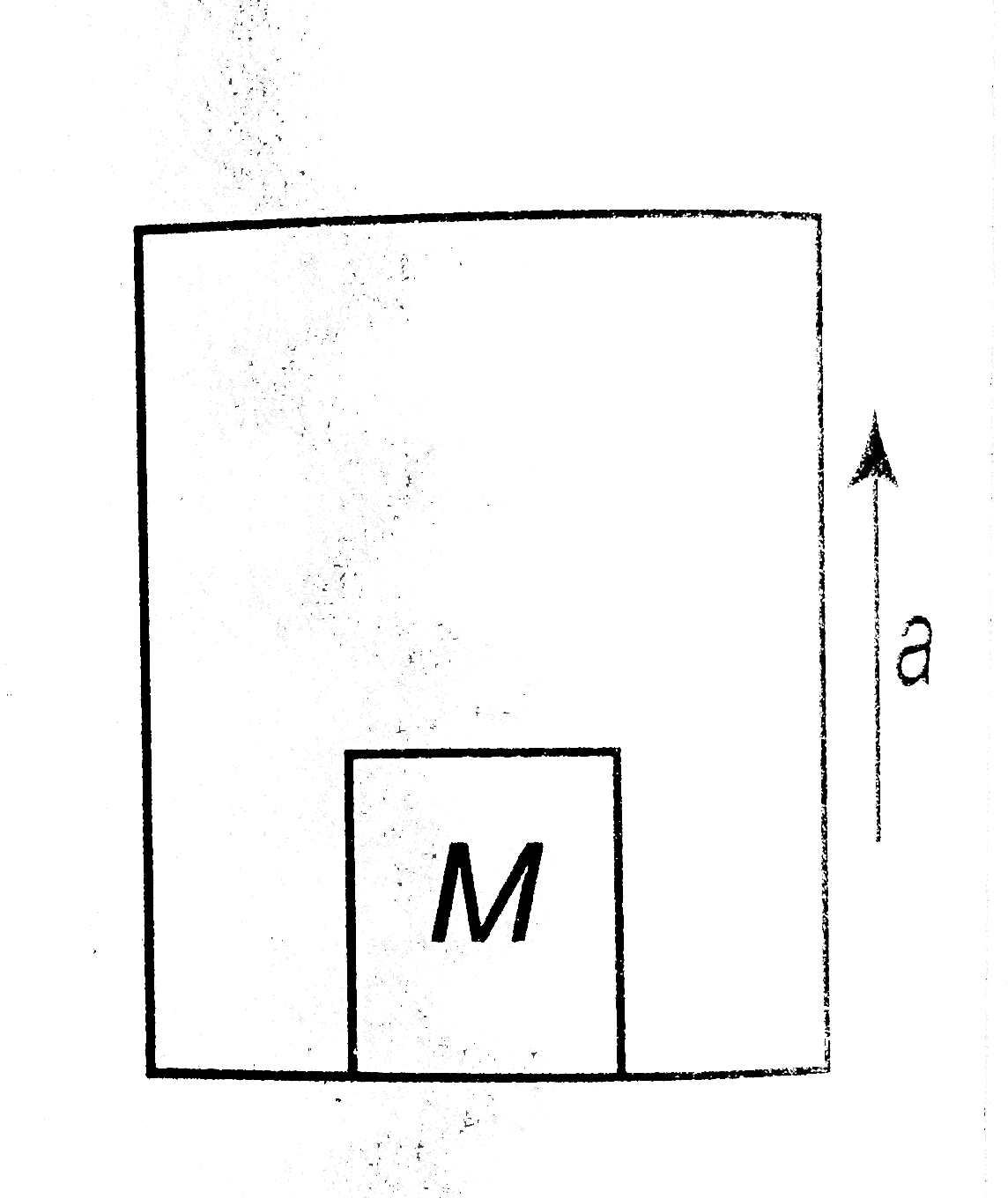 02:13View Solution
02:13View SolutionThe elevator shown in fig. is descending with an acceleration of `2ms^(-2)`. The mass of the block `A=0.5kg`. Find the force (in Newton) exerted by block A on block B.
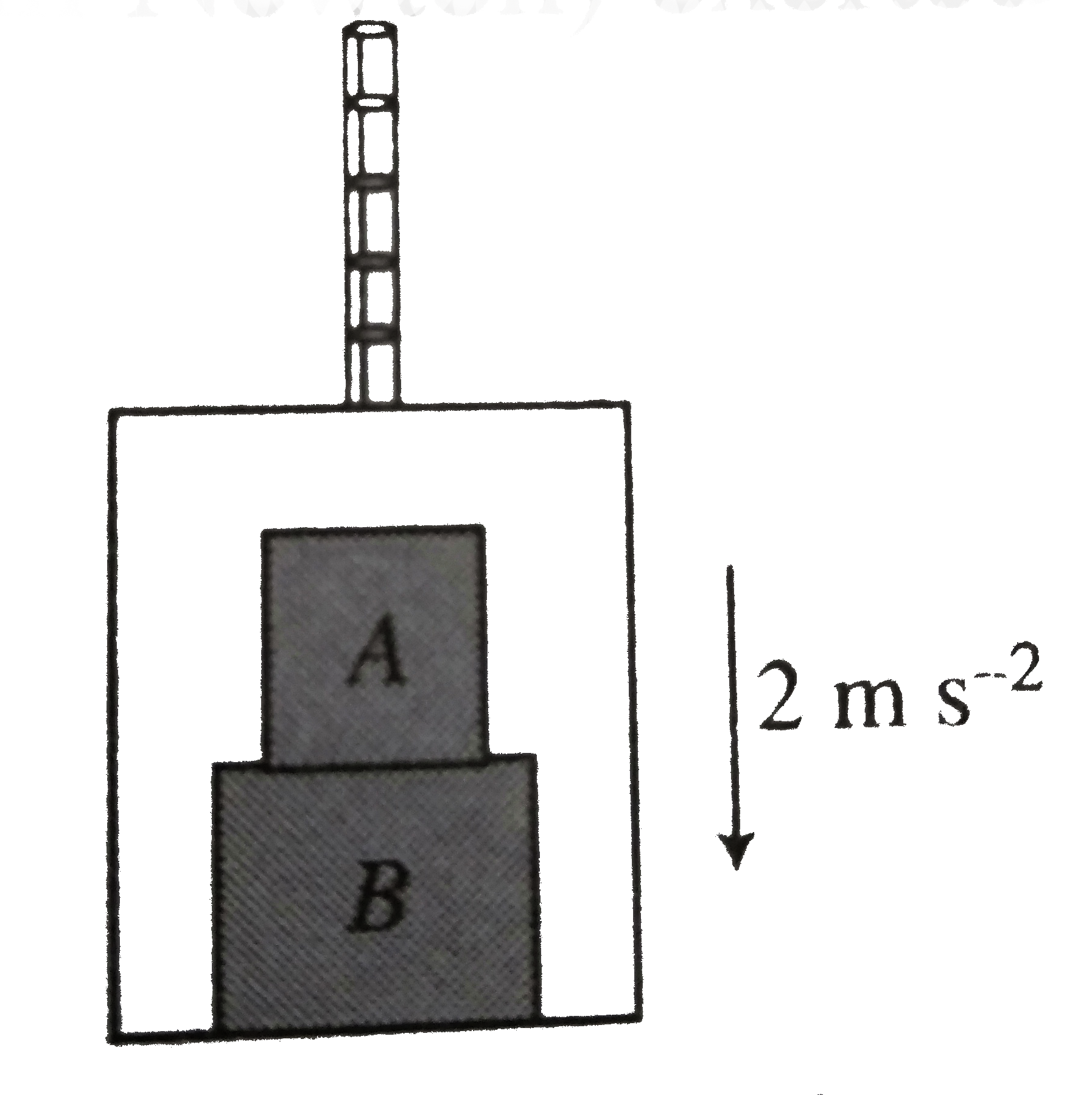 01:58View Solution
01:58View SolutionAn elevator is accelerating upwards with an acceleration of `6m//s^(2)` . Inside it a person of mass 50kg is standing on a weighing machine which is kept on an inclined plane having angle of inclination `60^(@)` . The reading of the weighing machine is:
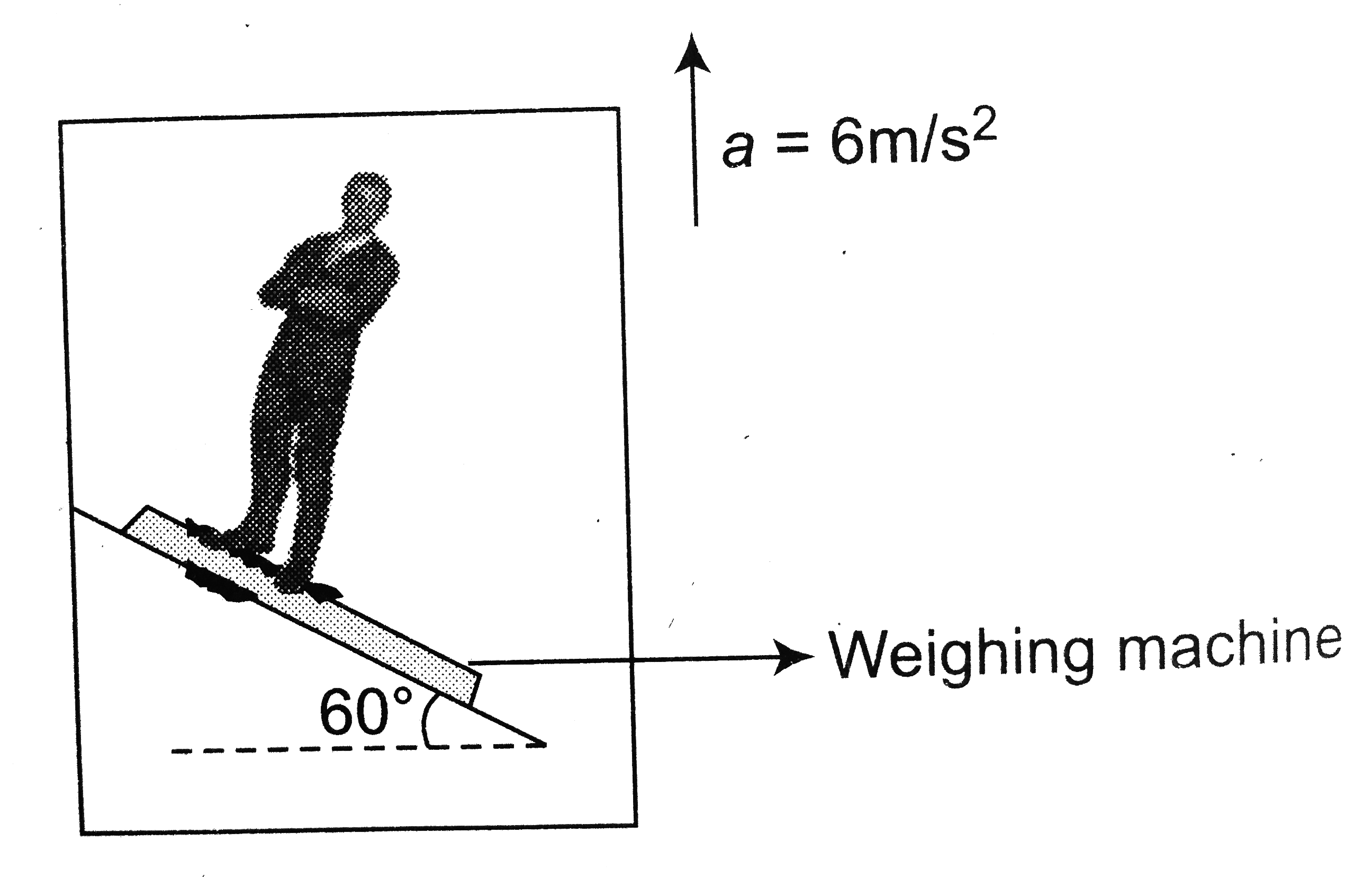 06:04View Solution
06:04View SolutionIn the given diagram, with what force must the man pull the rope to hold the plank in position? Mass of the man is 80kg. Neglect the weights of plank, rope and pulley. Take.
 03:18View Solution
03:18View SolutionConsider the three cases given in figures shown. Assume the friction to be absent everywhere and the pulleys to be light, the string connecting the blocks to other block or fixed vertical wall to be light and inextensible. Let `T_(A)` , `T_(B)` and `T_(C)` be the etnsion in the strings in figure `A` , figure `B` and figure `C` respectively. Then pick the correct comparison between the given tension (for the instant shown) from options below.
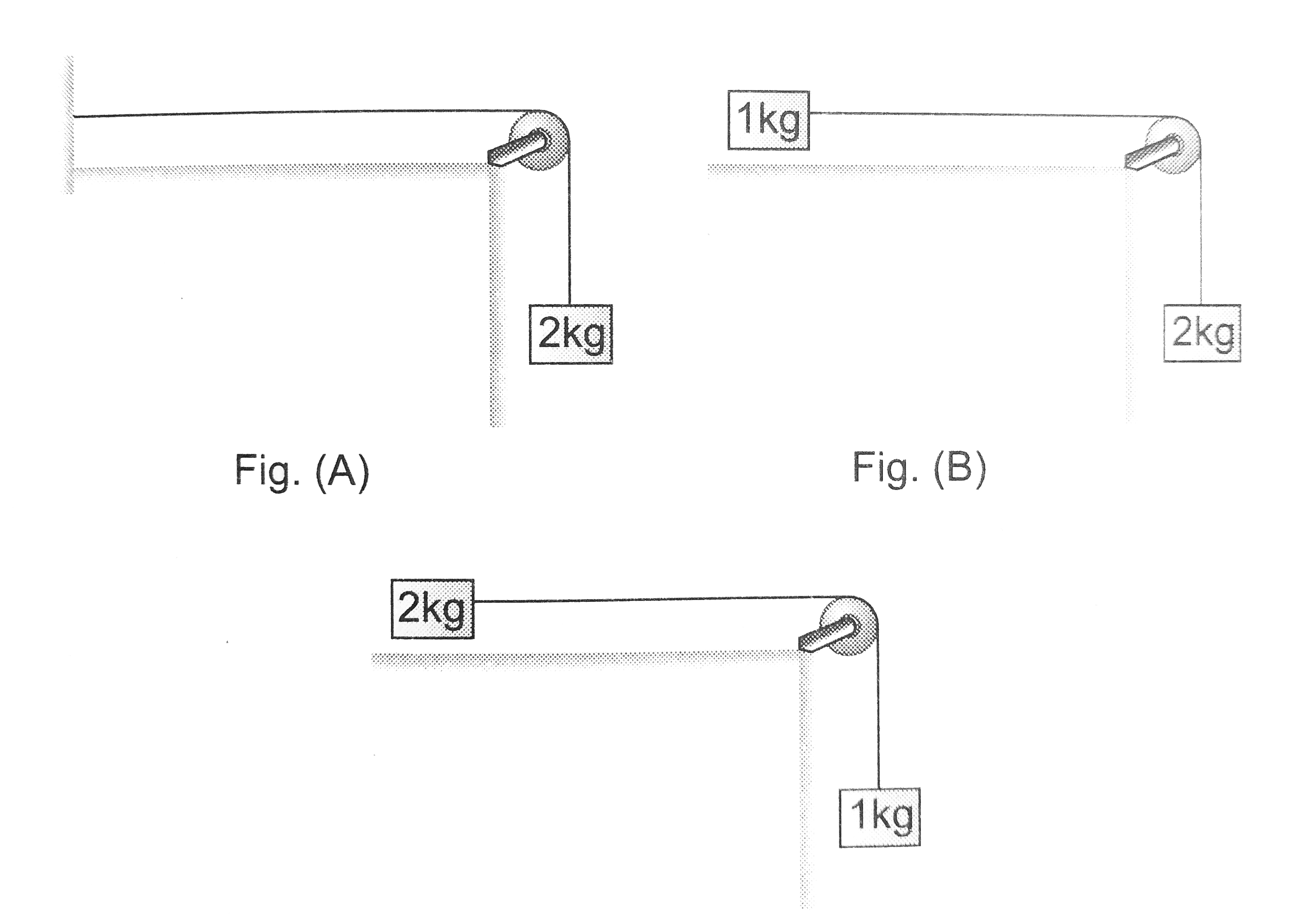 02:47View Solution
02:47View SolutionConsider the system as shown in the figure. The pulley and the string are light and all the surfaces are frictionless. The tension in the string is `(g=10m//s^(2))` .
 03:17View Solution
03:17View SolutionA boy and a block, both of same mass, are suspended at the same horizontal level, from each end of a light string that moves over a frictionless pulley as shown. The boy start moving upward with an acceleration `2.5m//s^(2)` relative the rope. If the block is to travel a total distance 10m before reaching at the pulley, the time taken by the block in doing so is equal to:
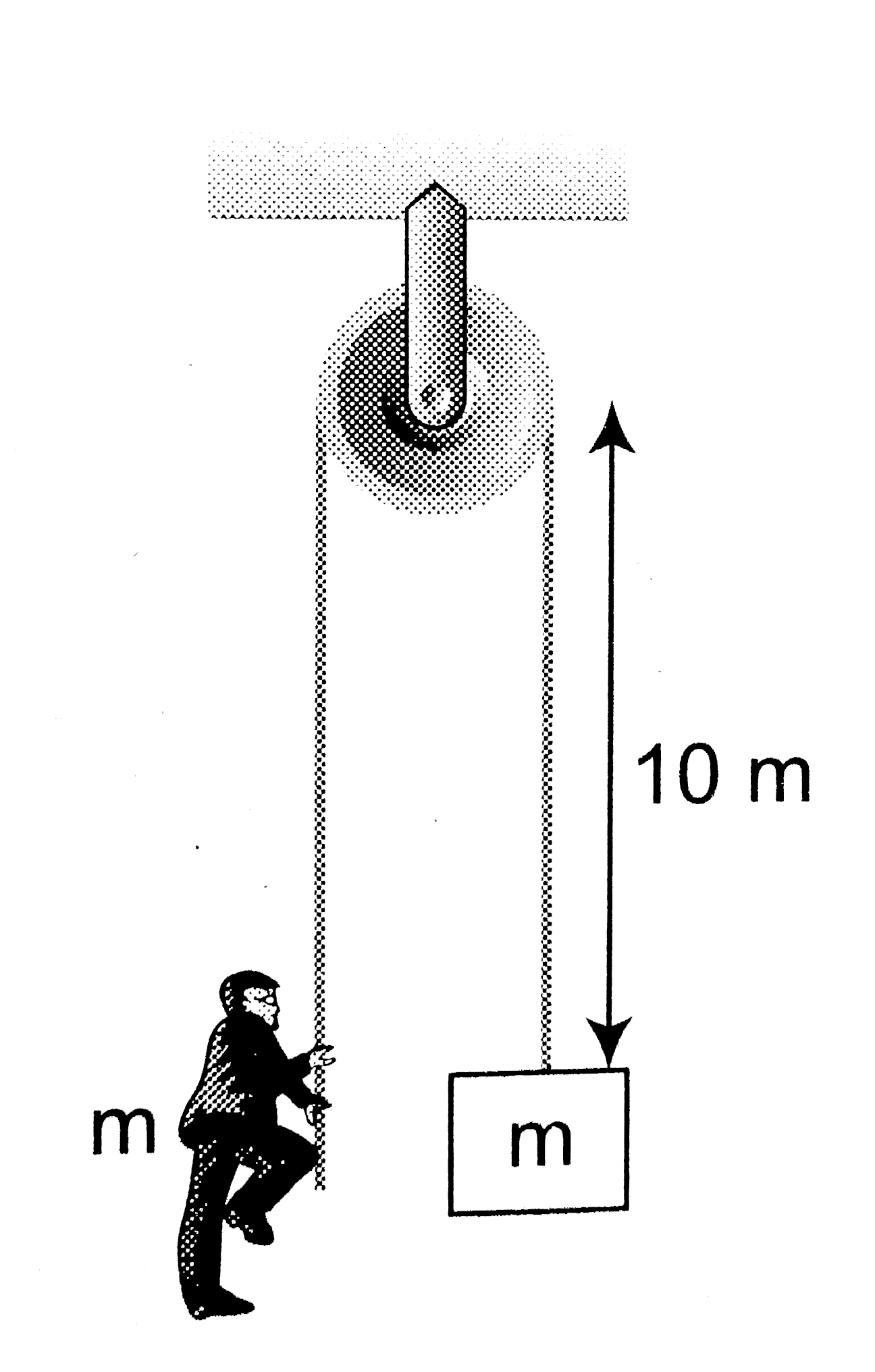 05:16View Solution
05:16View SolutionIn order to raise a mass of 100kg `a` of mass 60kg fastens `a` rope to it and passes the rope over a smooth pulley. He climbs the rope with acceleration `5g//4` relative to the rope. The tension in the rope is: Take `g=10m//s^(2)`
06:56View SolutionTwo masses of 1kg and 5kg are attached to the ends of a massless string passing over a pulley of negligible weight. The pulley itself is attached to a light spring balance as shown in figure. The masses start moving during this interval, the reading of spring balance will be:
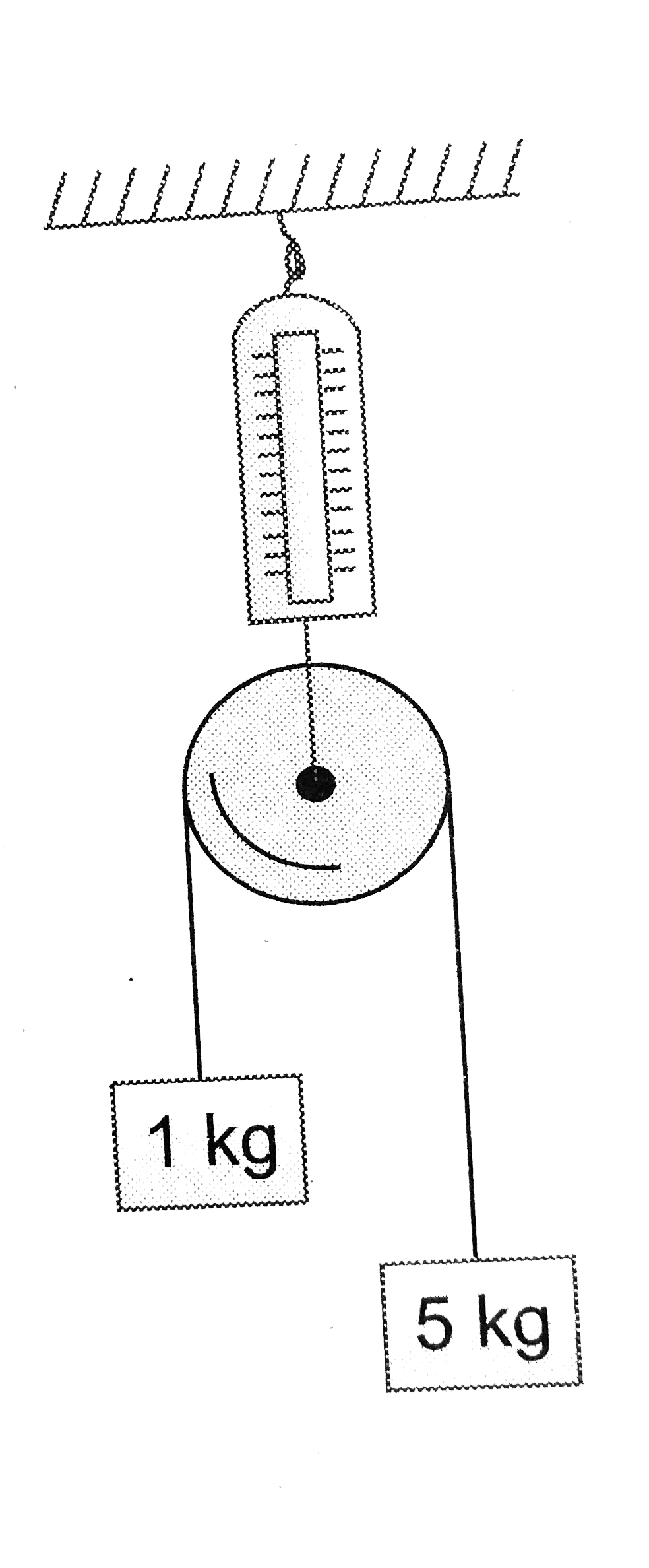 05:02View Solution
05:02View SolutionThree equal weight `A,B` and `C` of mass `2kg` each are hanging on a string passing over a fixed frictionless pulley as shown in the figure. The tension in the string connecting weights `B` and `C` is approximately
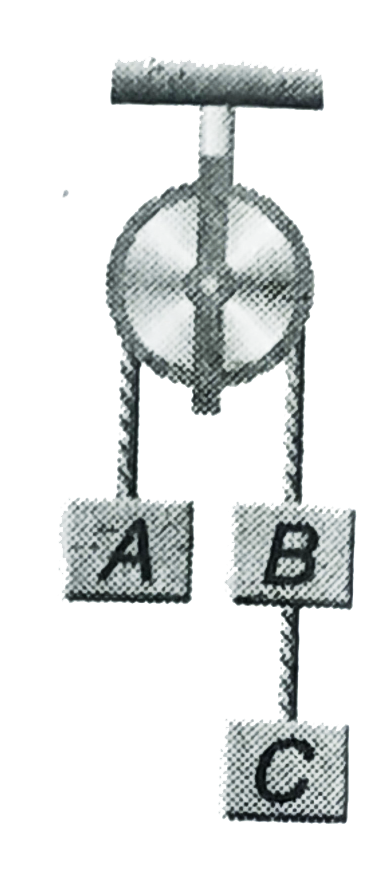 02:11View Solution
02:11View SolutionTwo bodies of mass 4kg and 6kg are attached to the ends of a string passing over a pulley. The 4kg mass is attached to the table top by another string. The tension in this string `T_(1)` is equal to: Take
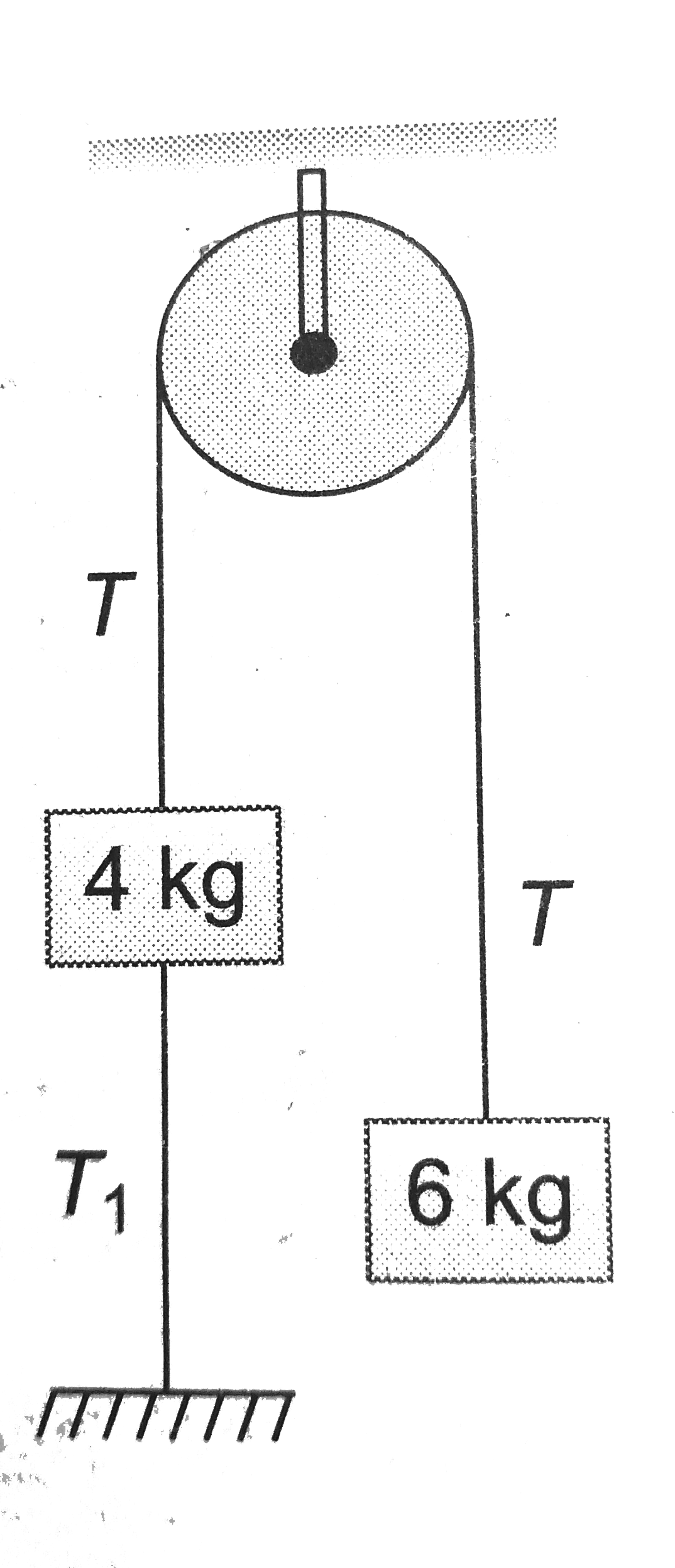 02:30View Solution
02:30View SolutionFigure shown two pulley arrangements for lifting a mass `m` . In case-1, the mass is lifting by attaching a mass 2m while in case-2 the mass is lifted by pulling the other end with a downward force `F=2mg` . If `a_(a)` and `a_(b)` are the accelerations of the two masses then (Assume string is massless and pulley is ideal).
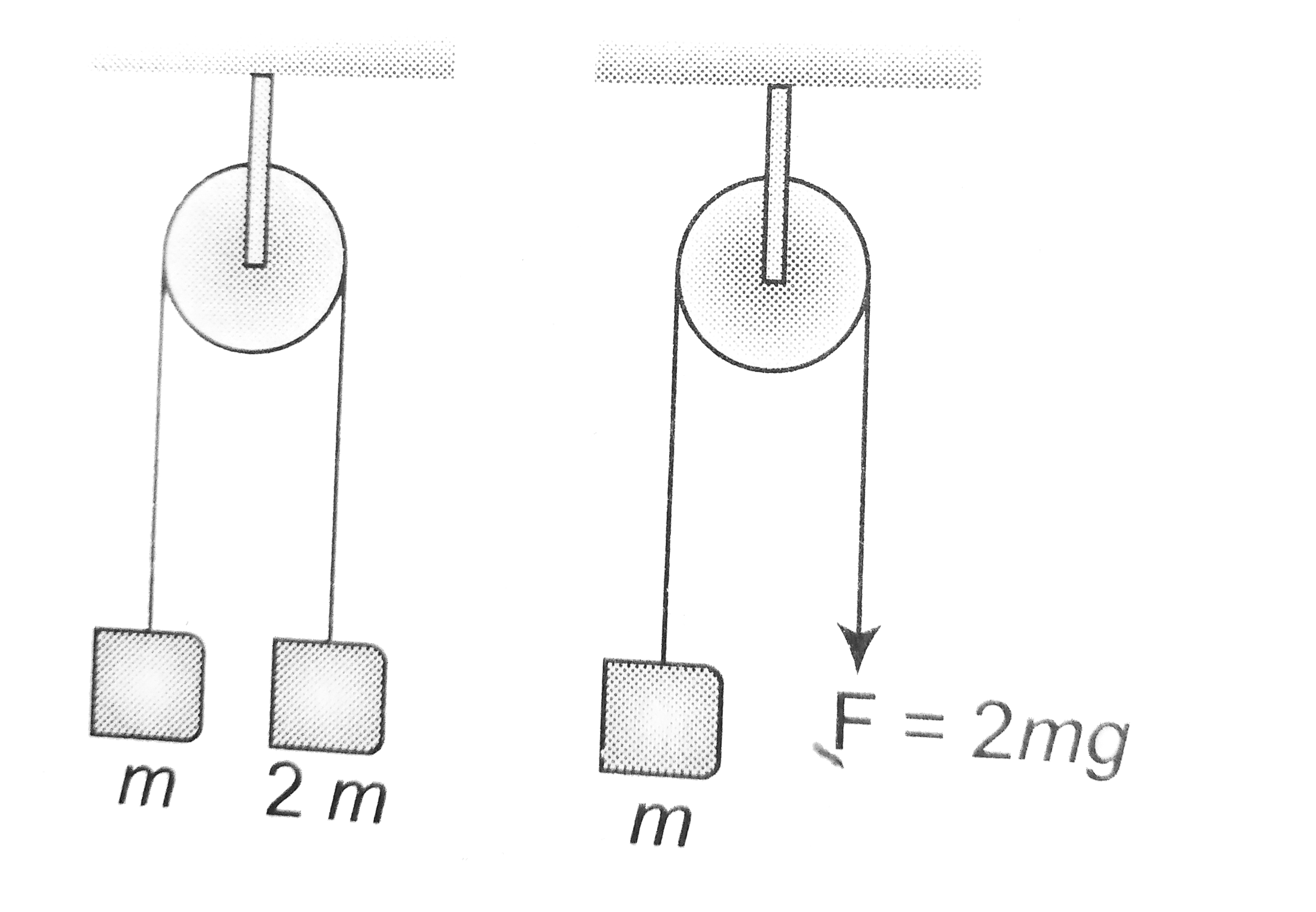 05:34View Solution
05:34View SolutionIn fig the blocks A, B, and C of mass m each have acceleration `a_(1),a_(2), and a_(3)`, respectively. `F_(1) and F_(2)` are external force of magnitude `2mg and mg`, respectively. Then
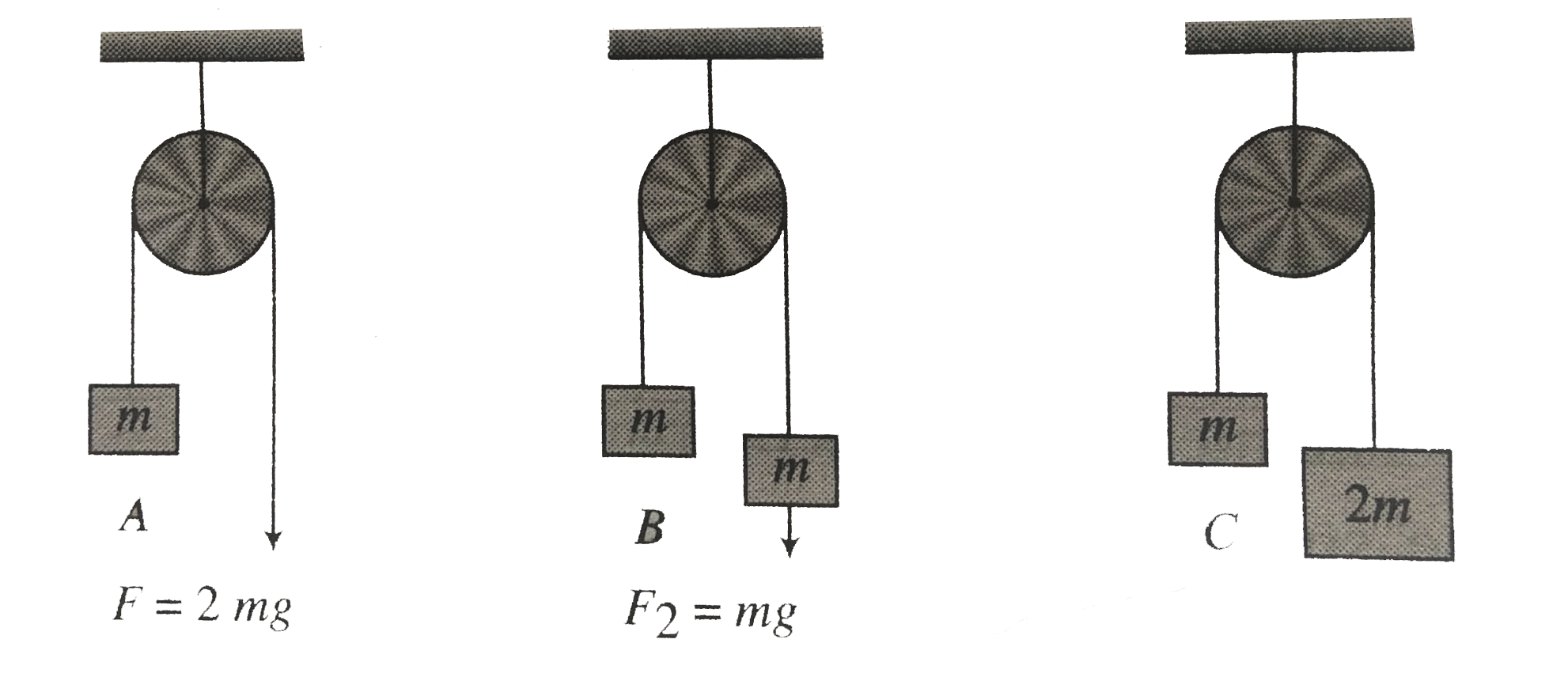 04:09View Solution
04:09View SolutionTwo block are connected by a string as shown in the diagram. The upper block is hung by another string. `A` force `F` applied on the upper string produces an acceleration of `2m//s^(2)` in the upward direction in both the blocks. If `T` and `T^(t)` be the tension in the two part of the string, then
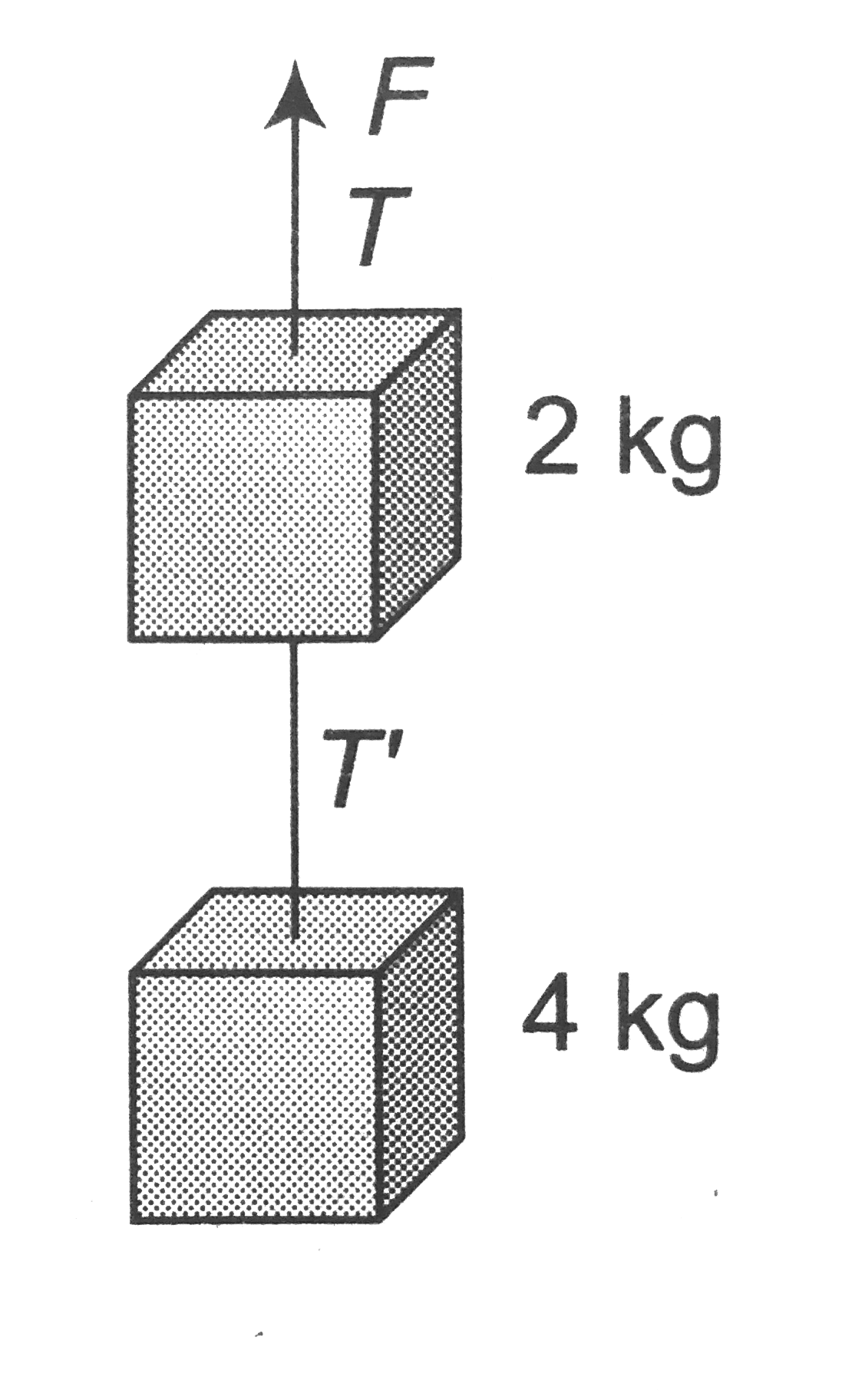 05:21View Solution
05:21View SolutionThree blocks are connected as shown in figure on `a` horizontal frictionless table. If `m_(1)=1kg` , `m_(2)=8kg` , `m_(3)=27kg` and `T_(3)=36N` , `T_(2)` will be.
 03:26View Solution
03:26View SolutionA force `F` is applied on block `A` as shown in the figure. The contact force between `A` and `B` and between the blocks `B` and `C` respectively are (Assume frictionless surface)
 06:44View Solution
06:44View SolutionTwo small sphere each of mass `m` connected by a string of length 2l are kept on a smooth horizontal surface. A vertical force `F` is applied at the middle of the string. What is maximum value of `F` for which the sphere do not lose contact with the surface?
 07:05View Solution
07:05View SolutionA perfectly straight portion of a uniform rope has mass `M` and length `L` . At end `A` of the segment, the tension in the rope is `T_(A)` and at end `B` it is `T_(B)(T_(B)gtT_(A)` . Neglect effect of gravity and no contact force acts on the rope in between points `A` and `B` . The tension in the rope at a distance `L//5` from end `A` is.
06:34View SolutionA block of mass `M` is pulled along a horizontal frictionless surface by a rope of mass `m` . Force P is applied at one end of rope. The force which the rope exerts on the block is:
06:51View SolutionA uniform of rope length `L` and mass `M` is placed on a smooth fixed wedge as shown. Both ends of rope are at same horizontal level. The rope is initially released from rest, then the magnitude of initial acceleration of rope is.
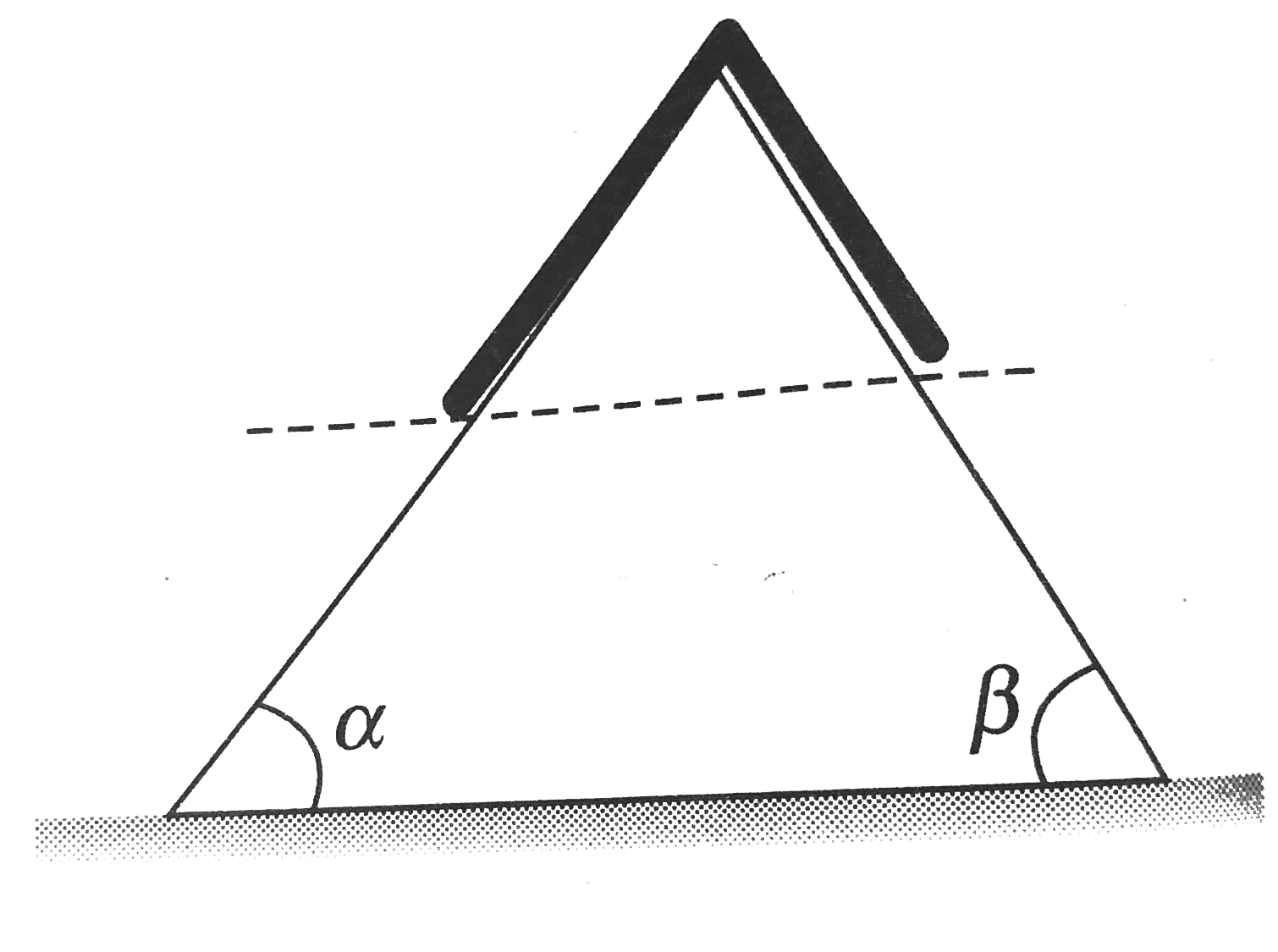 04:21View Solution
04:21View SolutionA wedge of height 'h' is released from rest with a light particle `P` placed on it as shown. The wedge slides down an incline which makes an angle theta with the horizontal. All the surface are smooth, `P` will reach the surface of the incline in time:
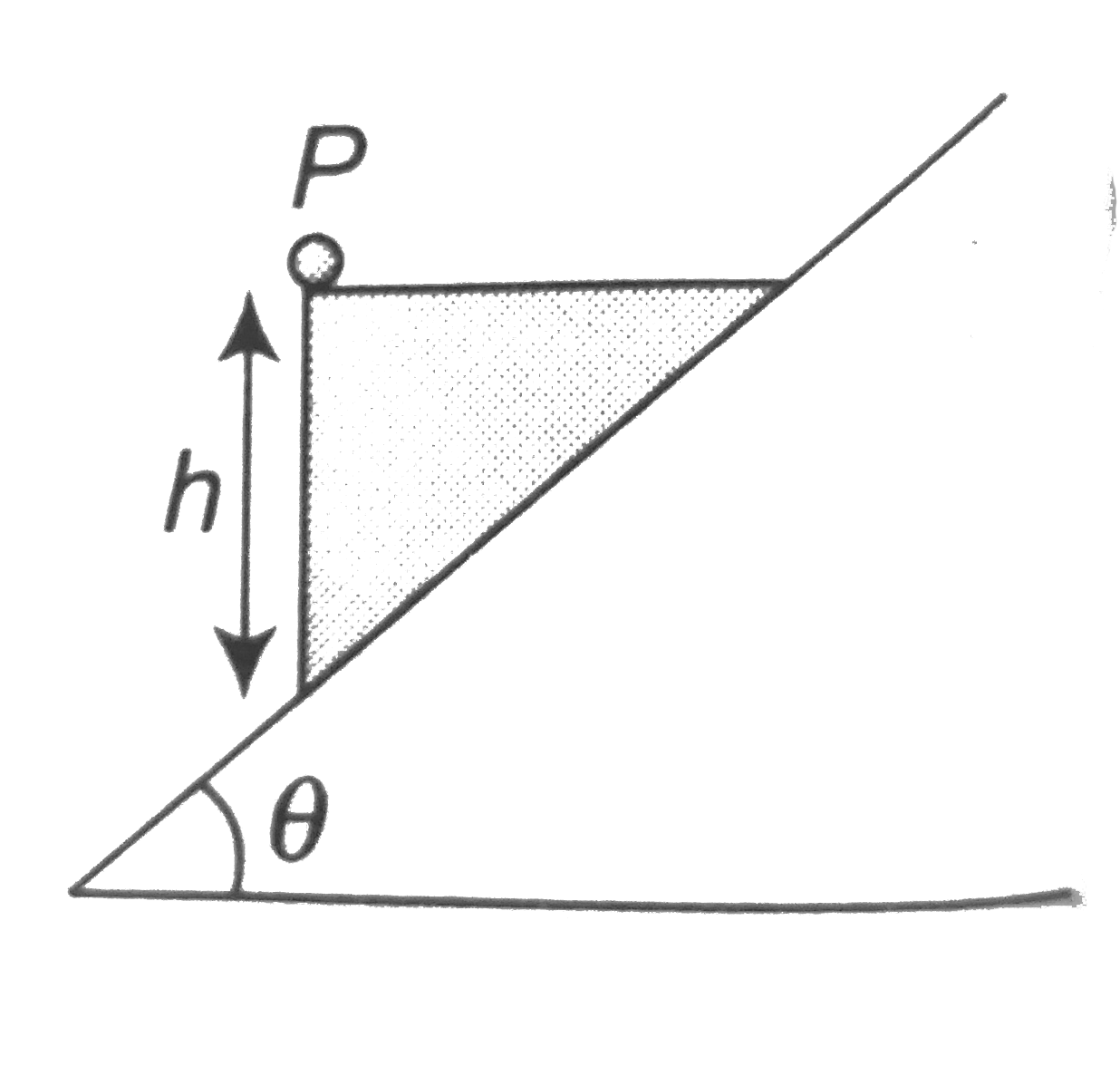 08:54View Solution
08:54View SolutionA cylinder rests in a supporting carriage as shown. The side AB of carriage makes an angle `30^(@)` with the horizontal and side BC is vertical. The carriage lies on a fixed horizontal surface and is being puplled towards left with an horizontal acceleration `a` . The magnitude of normal reactions exerted by side AB and BC of carriage on the cylinder be `N_(AB)` and `N_(BC)`resectively. Neglect friction everywhere. Then as the madnnitude of acceleration `a` of the carriage is increased, pick up the correct statement:
 10:19View Solution
10:19View SolutionA ball is suspended on a thread from the ceiling of a car. The brakes are applied and the speed of car changes from `5` m/sec to `5//3 ` m/sec during the time interval of 3 seconds. Find the angle that the thread with the ball will deviate from vertical.
08:30View SolutionA block of mass `2kg` slides down the face of a smooth `45^@` wedge of mass `9 kg` as shown in the figure. The wedge is placed on a frictionless horizontal surface. Determine the acceleration of the wedge.
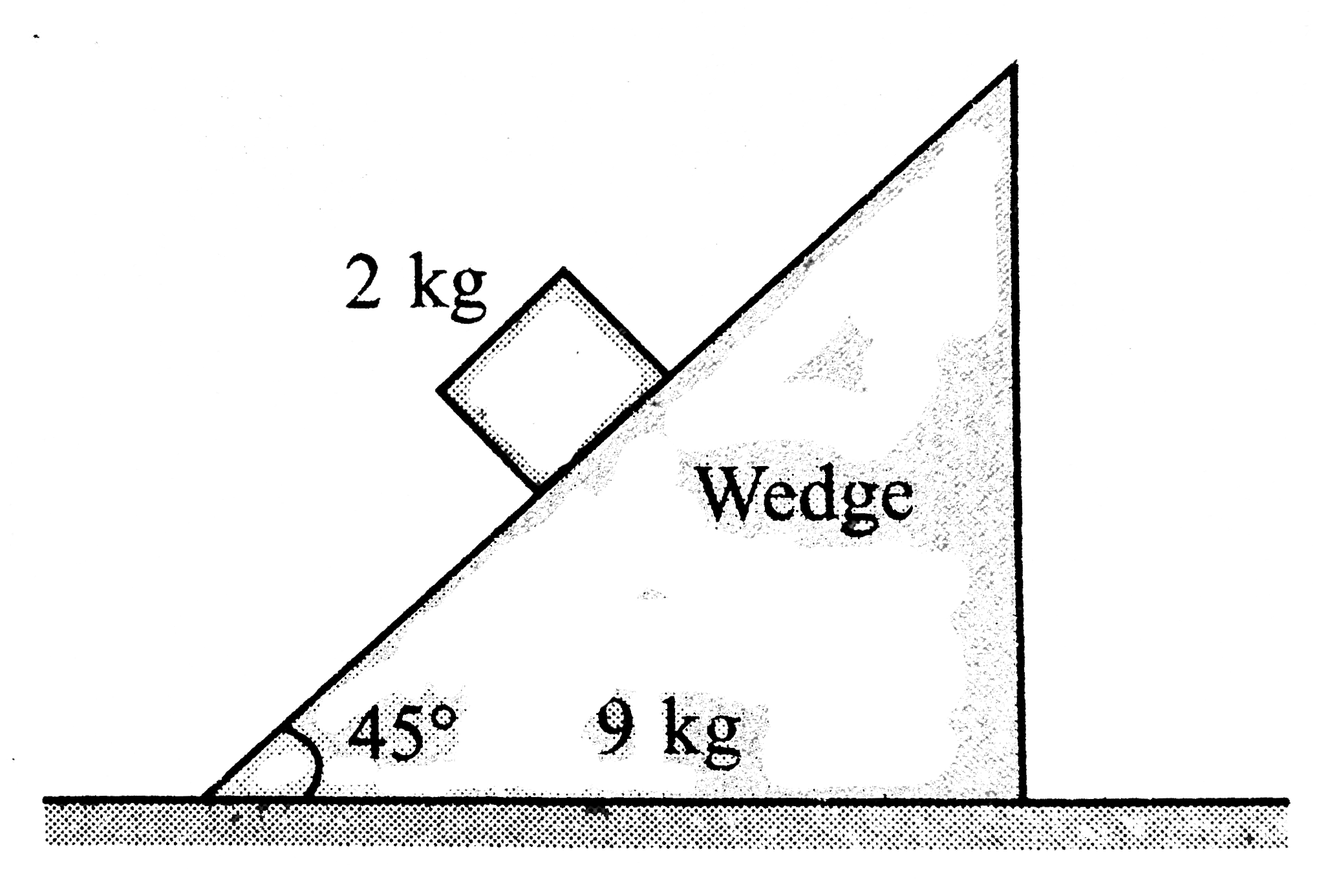 03:19View Solution
03:19View SolutionA body of mass `m` is placed over a smooth inclined plane of inclination theta. Which iis placed over a lift which is moving up with an acceleration `a_(0)` . Base length o f the inclined plane is `L` . Calculate the velocity of the block with respect to lift at the bottom, if it is allowed to slide down from the top o fthe plane from rest.
09:03View SolutionTwo wooden blocks are moving on a smooth horizontal surface such that the mass `m` remains stationary with respect too block of mass `M` as shown in the figure. The magnitude of force `P` is:
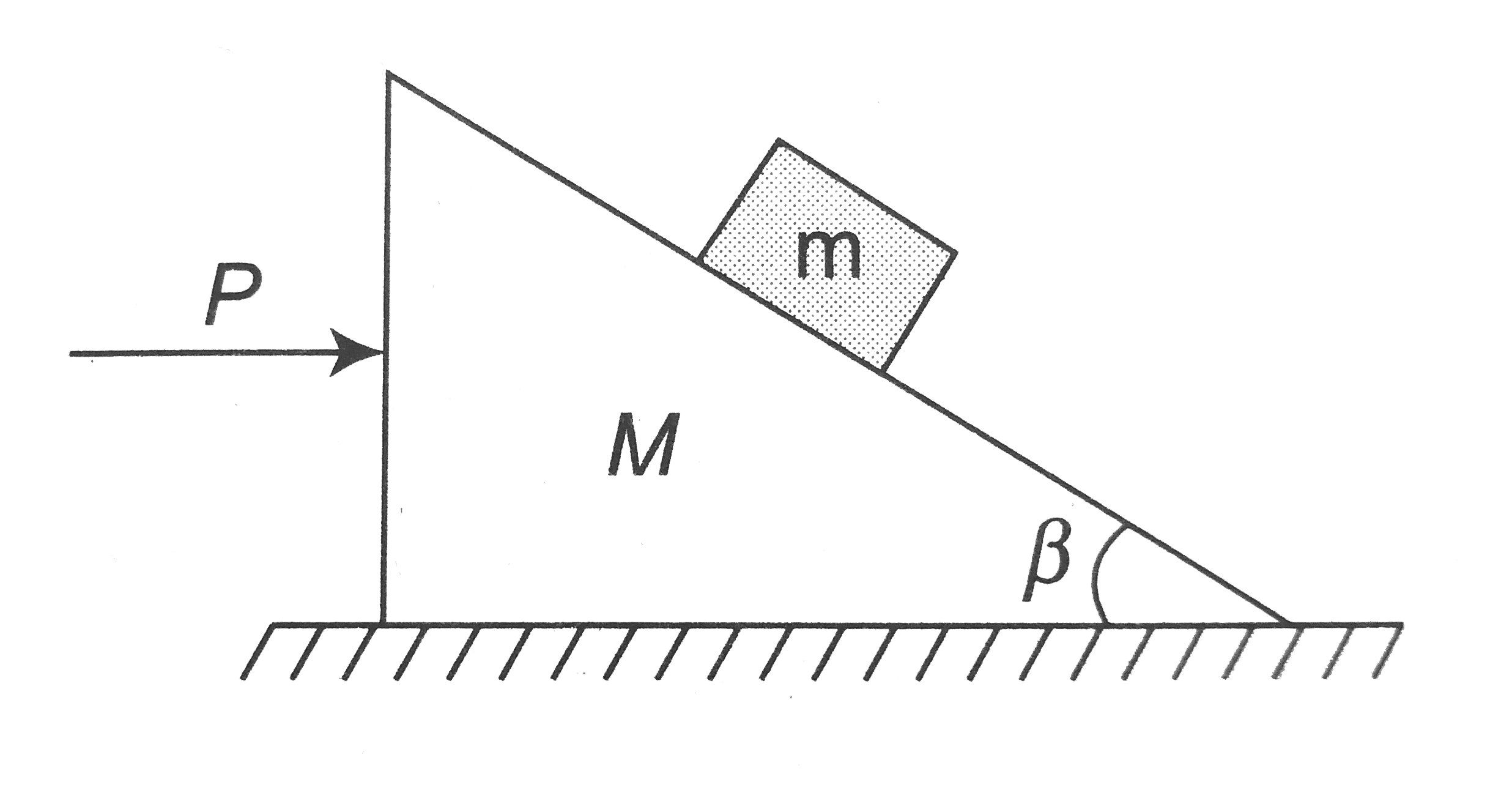 07:37View Solution
07:37View SolutionA block is kept on a frictionless inclined surface with angle of inclination `alpha`. The incline is given an acceleration 'a' to keep the block stationary. Then a is equal to
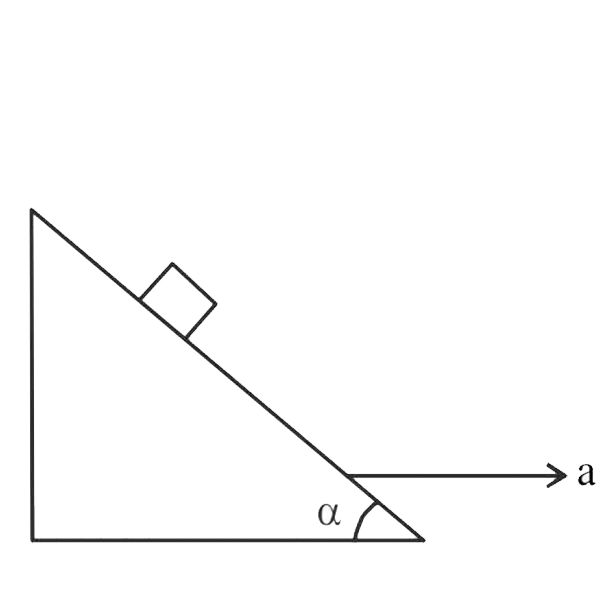 04:39View Solution
04:39View SolutionA bob is hanging over a pulley inside a car through a string. The second end of the string is in the hands of a person standing in the car. The car is moving with constant acceleration `a` directed horizontally as shown in fig. The other end of the string is pulled with constant acceleration `a` vertically. The tension in the string is equal to
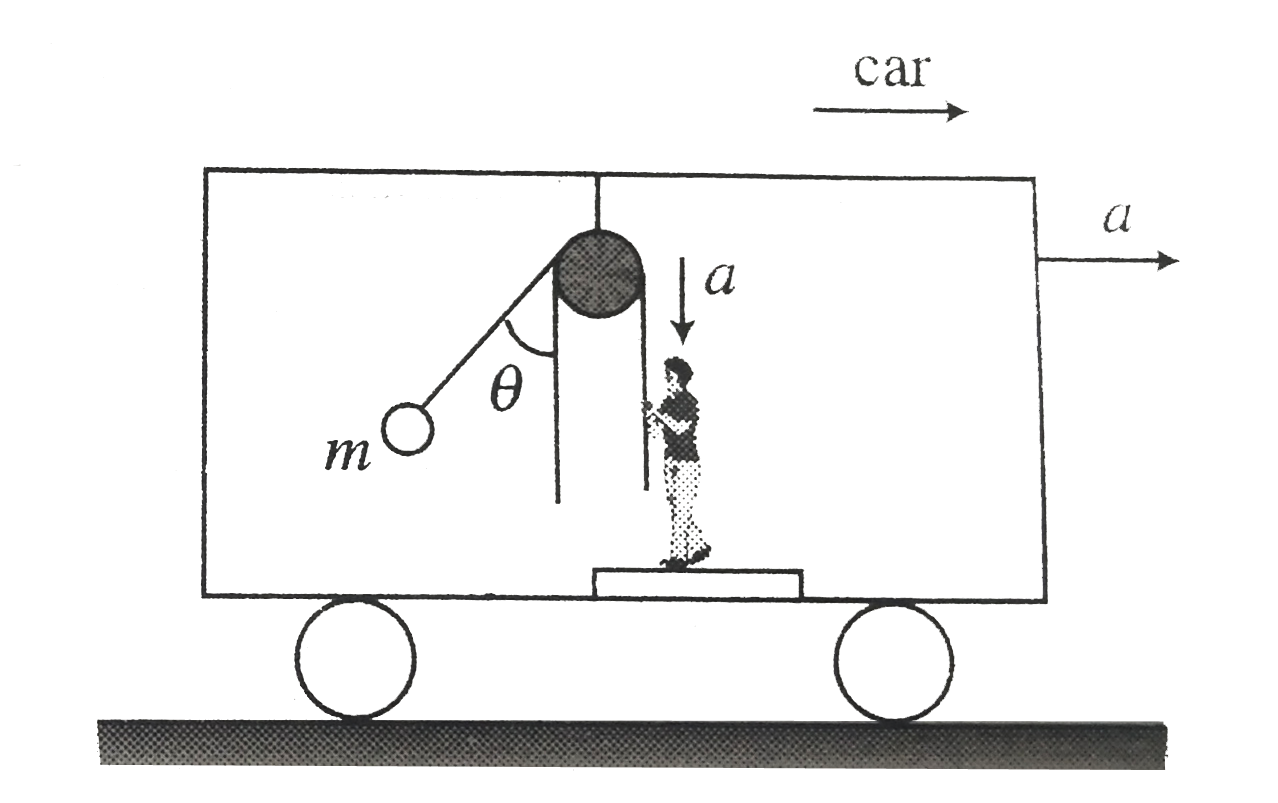 05:43View Solution
05:43View SolutionA large cubical shaped block of mass `M` rests on a fixed horizontal surface. Two blocks of mass `m_(1)` and `m_(2)` are connected by a light inextensible string passing over a light pulley as shown. Neglect friction everywhere. Then the constant horizontal force of magnitude `F` that should be applied to `M` so that `m_(1)` and `m_(2)` do not mov relative to`M` is:
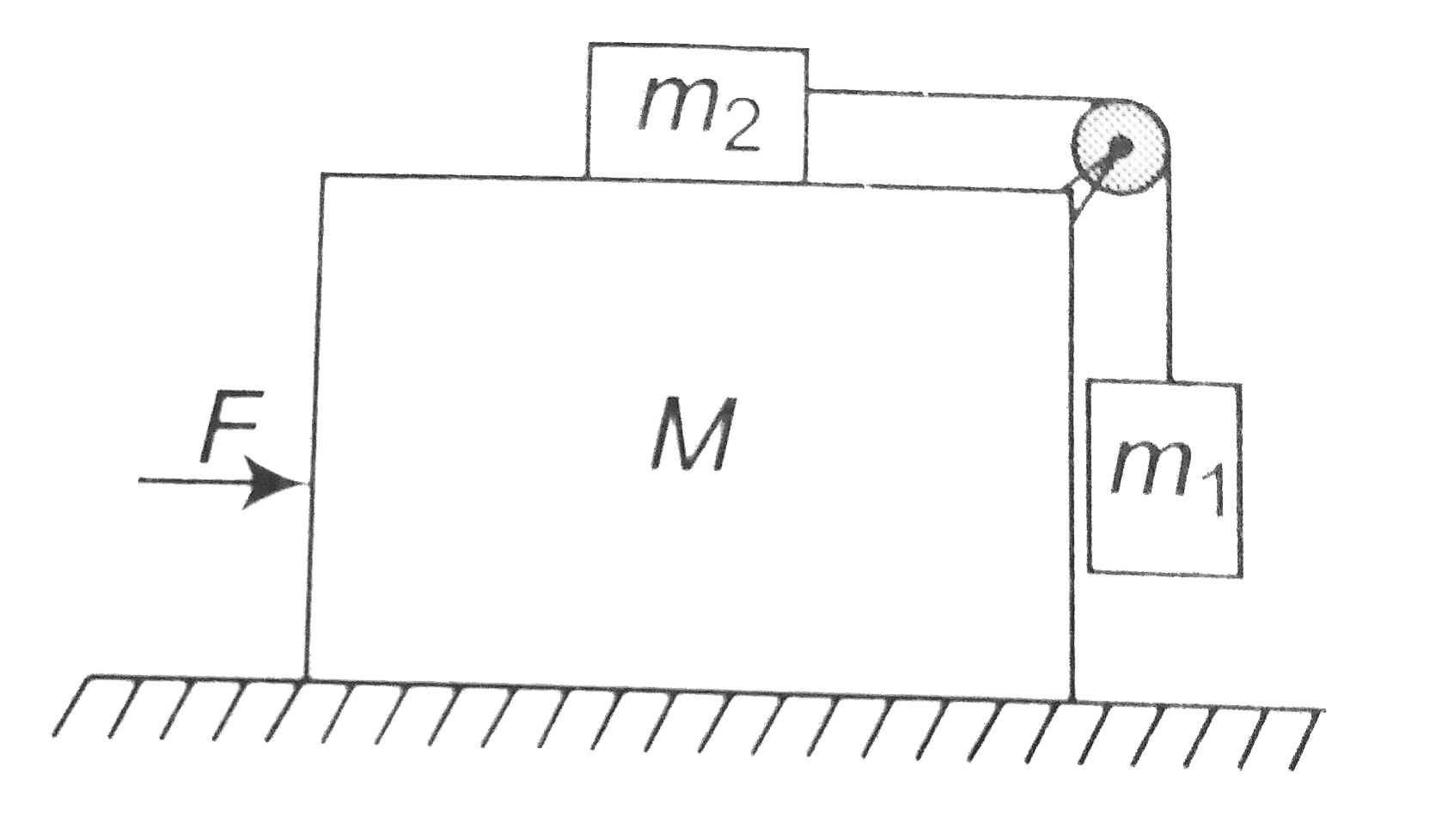 03:16View Solution
03:16View SolutionA block of mass `m` is kept on a wedge of mass `M` . Initially the system is held. At certain time the system is released and the wedge is observed to move with acceleration `A` on inclined surface as shown. There is no friction anywhere. The acceleration of block `(m)` with respect to wedge `(M)` will be.
`.`06:31View SolutionA block of mass `m_(1)` lies on a smooth horizontal table and is connected to another freely hanging block of mass `m_(2)` by a light inextensible string passing over a smooth fixed pulley situated at the edge of the table. Initially the system is at rest with `m_(1)` a distance `d` from the pulley. Then the time taken for `m_(1)` to reach the pulley is.
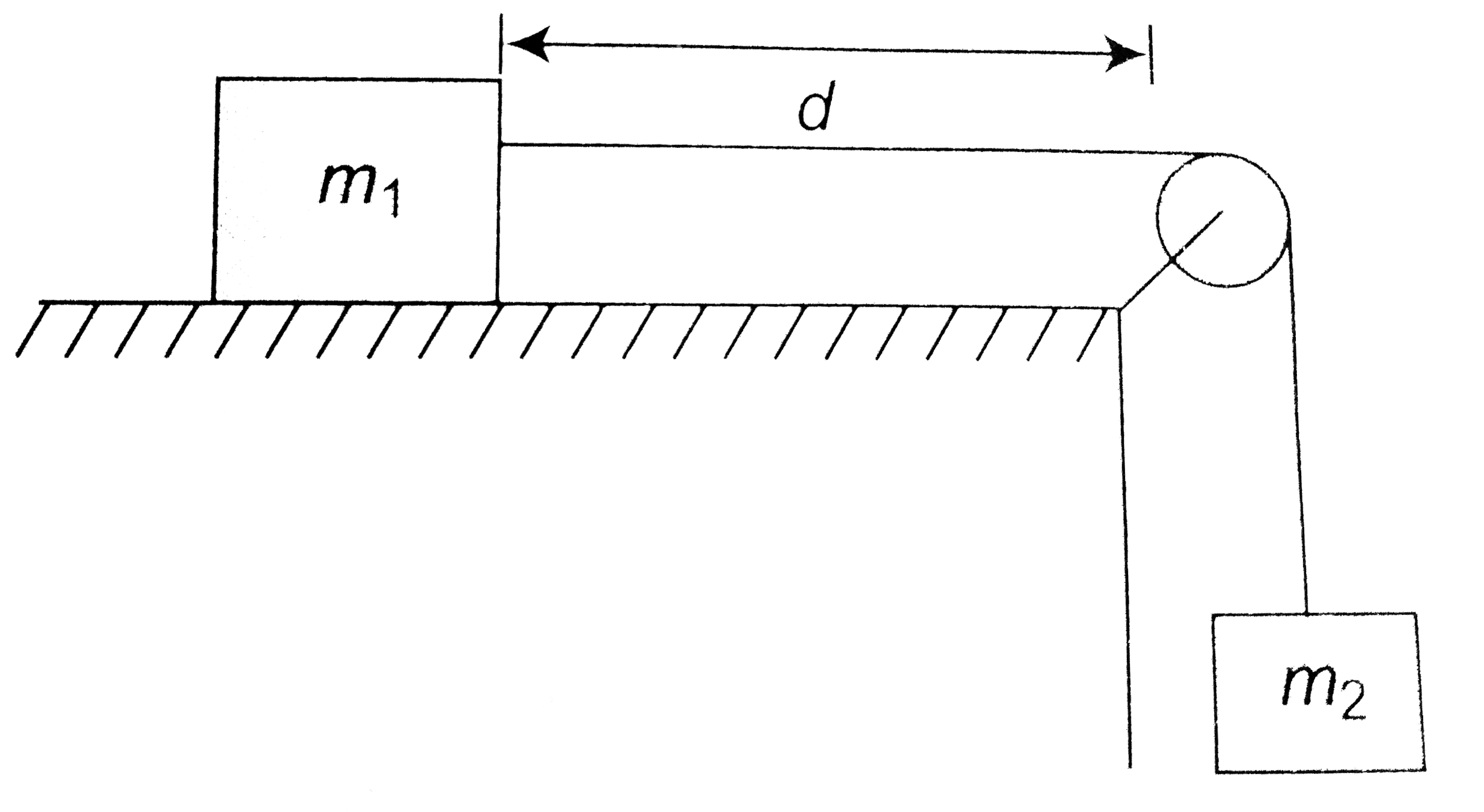 06:53View Solution
06:53View Solution
Applications Of Newton'S Laws Of Motion questions and complete solutions for chapter NEWTONS LAWS OF MOTION of A2Z PHYSICS (HINGLISH) of Class 11
